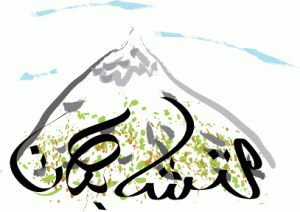
Have you ever thought of the Quran as an allegory of the human mind? We know that the Quran is made for the human brain, but did you know that the human brain is also made for the Quran? Let’s clear this up. The brain has two hemispheres, right? Well, so does the Quran. It has two types of verses:
He is the one who revealed the Book to you. It contains verses that are clear [muhkamat], they are the foundation of the Book, while others are unclear and allegorical [mutashabehat] [. . .] (3:7)
The verses called the muhkamat are about laws and religious duties, like prayer and fasting, while the other verses, called the mutashabehat, are figurative and symbolic. (We’ll discuss the rest of this verse 3:7 in Part 3 of this blog post).
If we look at how the brain deals with language, notice that the left hemisphere recognizes the grammar and laws of arranging words while the right hemisphere mostly senses the emotional meaning of language through the rhythm of sounds.1
Isn’t this duality simply astounding? Not only do the brain and the Quran have two parts to their setup, but their functions mirror each other!2 The muhkamat deal with laws just like the left hemisphere, while the mutashabehat deal with abstract things like allegories and figurative language, much like the more abstract concept of emotion that the right hemisphere helps with.
Here’s an example of a mutashabehat verse. Do you remember the verse about the “garment of God-consciousness” being the best clothes we could ever wear?
O Children of Adam! We have given you garments to cover your shame and as an adornment. But the garment of God-consciousness [taqwa]—that is best. These are among the Signs of God so people may benefit (7:26).3
Being conscious of God/taqwa is a state of mind, but it isn’t clothes that we wear like a garment. So what could this mean? How could we wear taqwa? This verse is figurative 🙂
Let’s reflect on this a little to figure out what it means. What do we use clothes for? Clothes protect us from the heat and the cold, they beautify our appearance, and they cover our shame. Now think about being aware of God. What a beautiful and powerful state of mind. The garment of taqwa protects us and beautifies us like no other garment ever could!
Isn’t it interesting that Adam and Eve, peace be upon them, became naked when they ate the fruit of the tree?
Then [Satan] misled them through deceit. When (Adam & Eve) tasted (the fruit) of the tree, their shame became apparent to them and they began covering themselves with leaves in the Garden (7:22).
Did you notice something? What garment did Adam and Eve lose that exposed their nakedness? They lost their garment of taqwa! This is what left Adam and Eve naked and vulnerable, exposing their shame.4
Adam and Eve’s nakedness via the “original sin” of eating from the tree is in the Bible too, but the deeper understanding we have comes from the symbols placed so conveniently side by side in the Quran: 7:22 mentions their nakedness and 7:26 mentions the garment of taqwa! Adam and Eve didn’t just become naked as some people often think. They became naked because they lost their garment of God consciousness! This is indeed the worst kind of nakedness.
God is certainly our Master Teacher!
Let this beautiful symbolism be a divine warning. Do not let the embodiment of evil, Satan, strip us of our garment of God-consciousness, leaving us naked, vulnerable, and exposed to our lower nature, but let our garments be a source of protection and beauty.
Wow! The Quran is marvelous indeed, and we better understood its beauty by reflecting on its symbols, the mutashabehat. When you have two things residing in the same place, you must end up with balance. There’s a balance in our anatomy between the right and left hemispheres of the brain, and there should just as importantly be a balance in how we read the Quran. Let’s appreciate both types of its verses: the muhkamaat and the mutashabehaat. We are a “community of the middle way” after all (see 2:143).
Stay tuned for Part 2 of this post discussing the beauty of the Quran’s symbols and the divine command to reflect upon them 🙂
Footnotes:
1. Carl Zimmer, “The Big Similarities & Quirky Differences Between Our Left and Right Brains,” Discover Magazine, April 2009, accessed March 14, 2015.http://discovermagazine.com/2009/may/15-big-similarities-and-quirky-differences-between-our-left-and-right-brains
2. At least in terms of how the brain deals with language.
3. Taqwa is the Arabic word for being aware and mindful of God, so the word “God-consciousness” is often used as its translation.
4. A friend mentioned this beautiful connection to me. Its credit is due to the deep-sighted Imam Warith Deen Muhammad.
Please feel free to comment.


